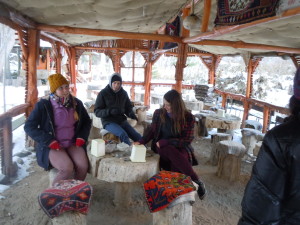Shel’s “I HATE to Write Handwritten Thank-Yous” Networking Guide

Pretty much every networking guru agrees: sending handwritten notes, especially thank-you notes, is one of the best ways to grow your importance in the minds of the people who receive them.
And I know that the hand-written thank-you notes I’ve received stay in my own mind for years, even decades.
But maybe, like me, you
- If I don’t recognize the caller ID: “Good morning/afternoon/evening, this is Shel. How may I make your day special? This starts a lot of great conversations.
- On the discussion lists I participate in, I do my best to answer people’s questions with friendly, helpful, useful advice—and to answer a lot more questions than I ask. For about ten years, this was the biggest source of new clients in my business, and all it cost was my time.
- Of course, I add value when possible. On social media, this is so easy: retweet, Like, and share good posts, sometimes engaging in dialog or bringing others directly into the conversation (tagging them). But outside of social media, you can add lots more value without a whole lot of work. Make e-mail introductions to people who could benefit from knowing each other, even if you have nothing to gain from their connection. Send an article or video link you think will interest your contact. Be of service as a volunteer. Interview movers and shakers for your blog, your telesummit, or the book you’re writing.
- Each year, I select a cool oddball birthday greeting (this year, it’s space aliens singing Happy Birthday). Whenever a Facebook connection’s birthday comes up, my assistant sends them the greeting. When they thank me, I often ask how they’re doing,w hat they’re up to, and when they respond to that, I fill them in on my own very exciting work turning hunger and poverty into sufficiency, war into peace, and catastrophic climate change into planetary balance. NOTE: since many of my FB friends know each other, I typically do these as private messages rather than wall posts.
- I’m always ready to start or join conversations with strangers—such as the three young Australian women in the picture, whom I met while hiking in Turkey. I’ve actually formed lasting relationships on public transit, at conferences, and yes, even at business networking events.
- Thank people publicly. When you make people look good in front of others, they remember.
